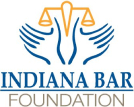
The birth of a child should be a joyous occasion. However, when medical negligence leads to birth injuries, it can have devastating consequences for the baby and family. If your child suffered harm during labor or delivery due to medical malpractice, you may be eligible to recover compensation for your losses.
Due to the heartbreaking nature of this issue, many people have questions about their legal rights and birth injury cases in Indiana. The Law Office of Kelley J. Johnson has the answers. Keep reading to learn more.
What are the Different Types of Birth Injuries?
Many preventable birth injuries can occur when medical providers fail to meet the required standard of care during labor and delivery. Common birth injuries include:
- Brain damage, such as cerebral palsy, periventricular leukomalacia (PVL), intracranial hemorrhage, hypoxic-ischemic encephalopathy (HIE), and brain stem injuries
- Broken bones, including the clavicle, humerus, and femur
- Erb’s palsy, often caused by brachial plexus injuries from excessive pulling or twisting
- Spinal cord injuries and nerve damage
- Bleeding between the skull and scalp (e.g., cephalohematoma or subgaleal hematoma)
- Caput succedaneum, or swelling of the scalp from prolonged pressure during birth
- Facial paralysis or injury from improper use of forceps or vacuums
- Brain injuries caused by lack of oxygen (e.g., perinatal asphyxia)
- Failure to diagnose or treat newborn conditions like jaundice or infections
- Medication errors or improper use of anesthesia/pain relief for the mother
No family expects to deal with a lifetime of medical complications for their precious newborn. You deserve answers and compensation if your child suffered harm due to a medical professional’s negligence.
How Common are Birth Injuries?
Birth injuries occur more often than many people realize. Around five in every 1,000 babies suffer injuries during childbirth each year in the United States. Because 3.66 million births occur annually, this equates to over 28,000 birth injuries nationwide. Many of these injuries are preventable.
What Steps Can You Take After a Birth Injury Occurs?
If your baby suffered harm during delivery, knowing what steps to take can put you on the path to justice. The most vital step is to consult an experienced Indiana birth injury attorney to learn your legal rights. An attorney can:
- Gather and preserve all medical records related to your prenatal care, labor, and delivery
- Have your child thoroughly evaluated by pediatric specialists
- Speak to an independent expert to help determine whether malpractice occurred
- File a medical malpractice claim before the statute of limitations expires
No amount of money can erase the trauma you and your family have experienced, but it can help provide care and therapy for your child.
Contact the Law Office of Kelley J. Johnson Today for a Free Consultation
The compassionate team at the Law Office of Kelley J. Johnson has helped numerous families obtain justice after tragic birth injuries. We can thoroughly investigate what went wrong and assist you with every stage
of the legal process. Call or contact us online for a free consultation with a dedicated birth injury lawyer in Indiana.










